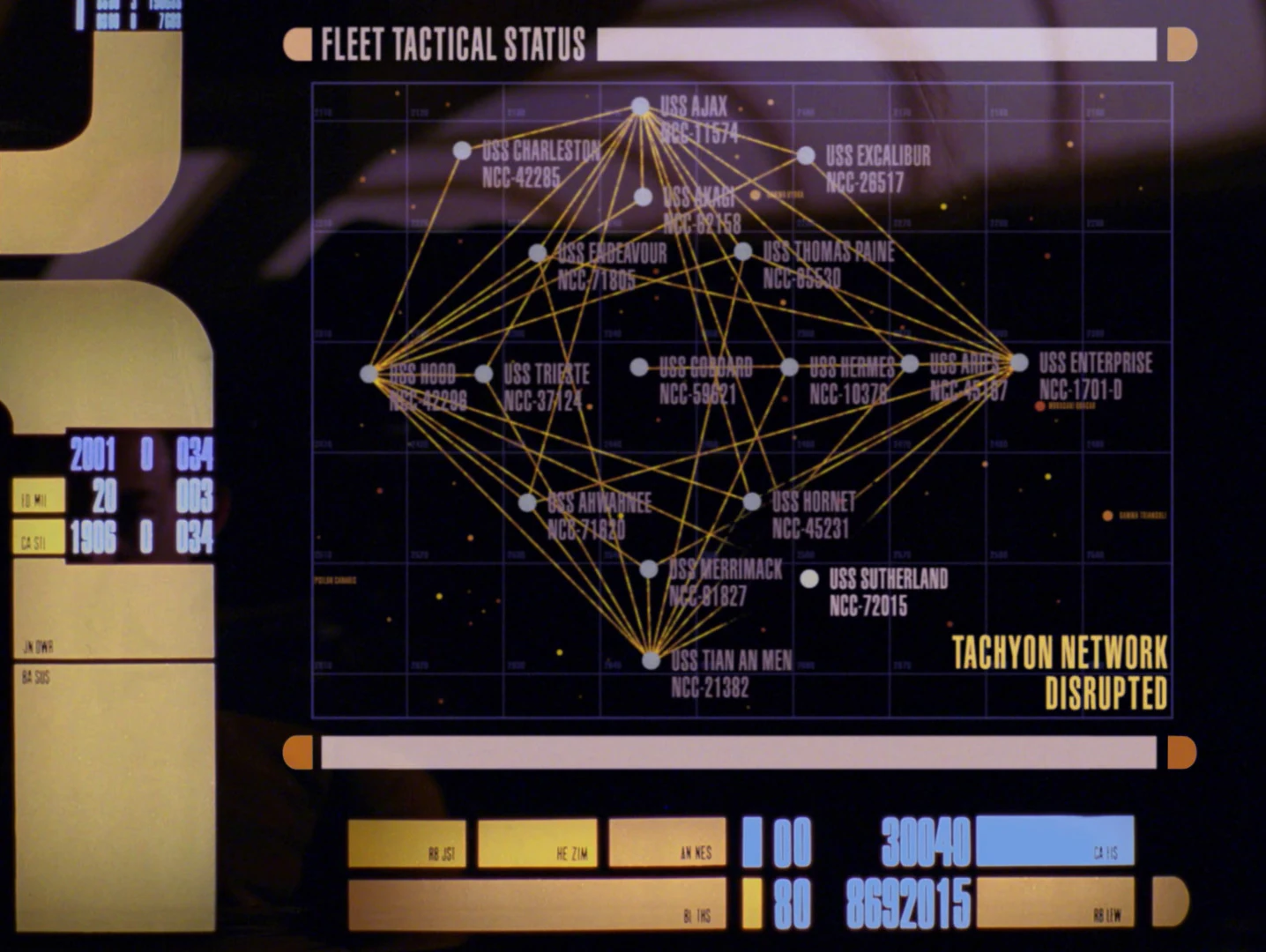It may be that tachyon emitters are like phased array radars- which can emit numerous beams from a single antenna. And tachyon detectors may be like cosmic ray particle detectors- which do not need to be specifically aimed at their target; one detector can spot numerous kinds of particles hitting from numerous directions and accurately track
which way each particle came in.
____________________________________
Replying to some of the others...
Ahem: note that you do NOT distribute buoys on a square grid, because space does not consist of 'tiles' from an RTS game. If buoys are spaced in a square grid and their sensor coverage only reaches halfway to the next buoy along a direct line, there's a big gap in the center of each 'square' of buoys. You can of course cover that gap with another buoy, but at that point you have effectively doubled the total number of buoys required in your network, and that may not be the most efficient arrangement.
So you actually want to arrange the buoys so that the spheres of detection they support will form a packing something like
this. Unfortunately I'm having trouble researching "what is the smallest number of circles you can use to do this." As a question it seems to be less popular than the question "what is the most non-overlapping circles you can fit in a rectangle," which in our case would be useless because we want NO gaps and therefore must accept overlap.
Above I estimated needing ~45000 buoys to provide sufficient overlap (each buoy having a detection radius of one light-day, and thus covering a circle one light-day in radius and pi square light-days in area). It might be more like 50000 or even 55000, again assuming
detection radius, not
spacing of one light-day.
Given roughly fifty thousand buoys, even if you arranged the buoys over a one square light year area chaotically so that every buoy had direct line of sight to every other buoy and there were beams connecting all of them, there would be roughly the square of the total number of buoys, divided by two- about 1.25 billion beams. If each beam is, say, a kilometer wide, then the total cross-sectional area of an average beam from the point of view of a passing Romulan ship is... one kilometer, times the average length of the beam. The average length of a beam between two random points on a square one unit in side length is about 0.52 units, as proven
here (yay calculus!)
Therefore you have 1.25 billion beams, 0.52 light-days long on average (that is, about 13.5 billion kilometers long), and one kilometer wide. Total beam area is about 1.6*10^19 square kilometers. From the point of view of a cloaked Romulan warbird, this grid of Federation buoys covers the light-year of area with 16 billion billions square kilometers of beams that have to be avoided. The problem is that a square light-year covers roughly
90 million billion billions of square kilometers of emptiness... space is, to quote the great man, big.
So your chances of being detected by flying through the beams is roughly 16 out of 90 million.
Note that this probability is VASTLY reduced if the Federation spaces their buoys in a regular geometric grid, because then you have multiple beams between multiple buoys that follow the same path, while leaving larger amounts of empty space.
It is also VASTLY reduced if a Federation sensor buoy is not capable of maintaining tachyon beam locks on, oh, 37000 of its nearest neighbors within a light-year, and has to settle for smaller numbers of beams. Then you get a much sparser and more threadbare grid... and the existing grid had about a one in six million chance of working as it was.
It is VASTLY increased, though, if the tachyon beam is sensitive to ships passing
near the beam (in cosmic terms), rather than being like one of those laser tripwires you have to cross directly. For example, if each beam is interrupted whenever a cloaked vessel passes within a million kilometers, each beam is effectively two million kilometers 'wide' rather than one kilometer 'wide.' The probability of detection for the Romulan ship stops being a lousy 16 out of 90000000, and becomes an actually rather respectable 16000000 out of 90000000
[If anyone has any questions about any of the math I just did, I have just gotten on spring break and there is almost nothing I would enjoy more on this website than to explain myself. Everything I did personally is within reach of any middle school graduate who paid attention; the calculus proof on the site I linked is harder but still doable with sufficient explanation]
